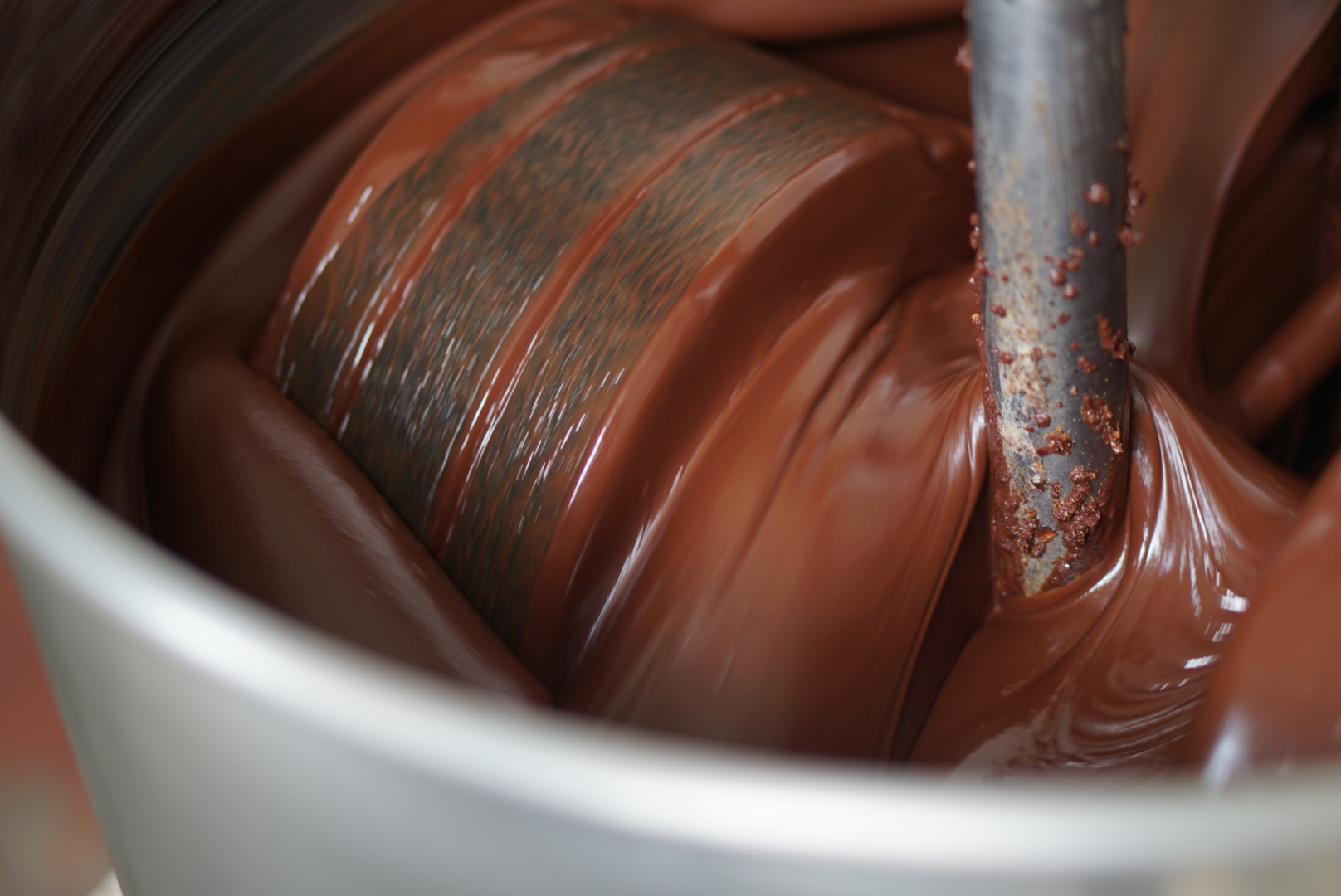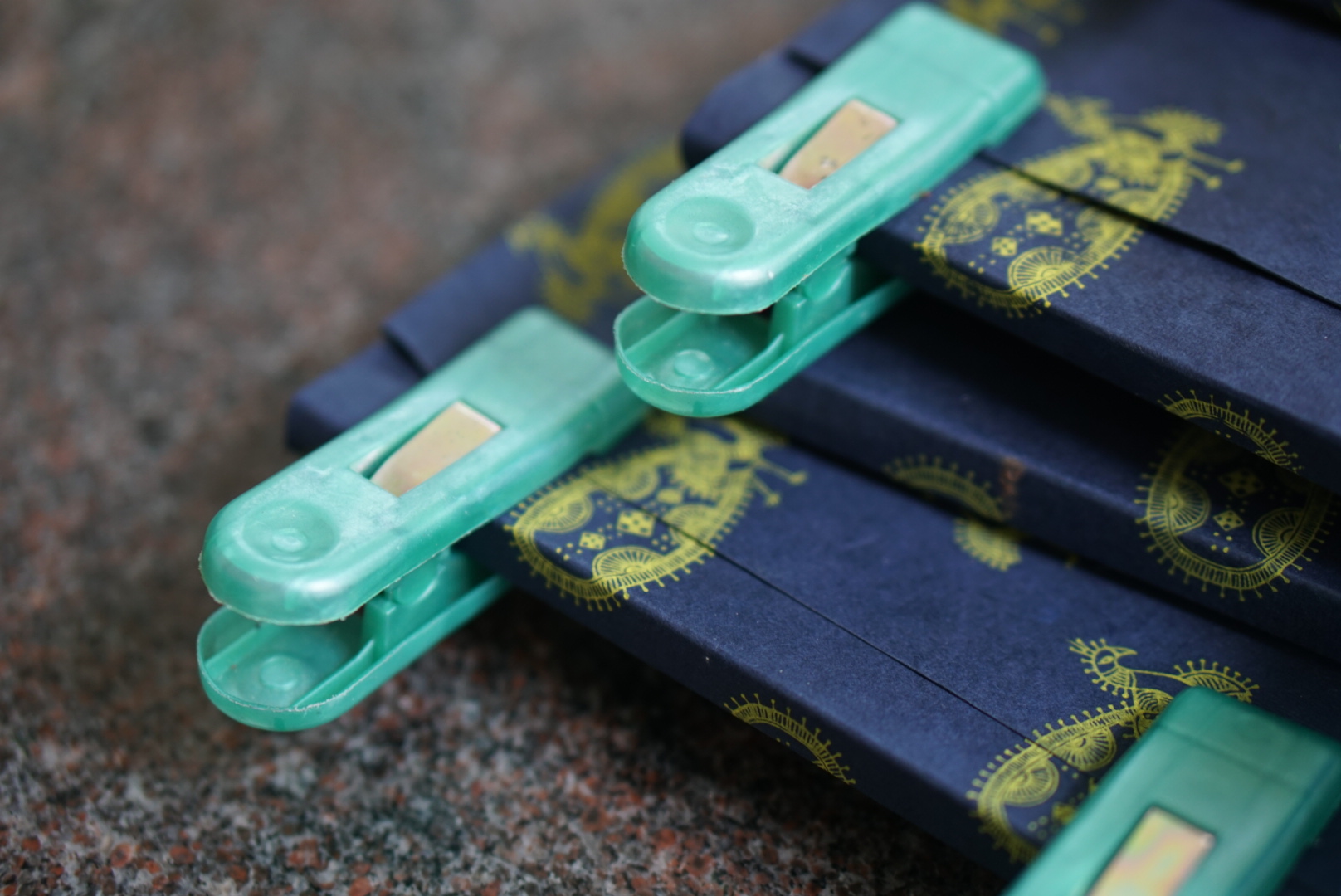Mysore, in southern India, is a genteel, sleepy city where a single traffic jam still elicits gasps from locals. It doesn’t have Goa’s holiday vibe or Pondicherry’s hipster creds. It is better known as ground zero for Ashtanga yoga rather than artisanal chocolate. Yet, this is where David Belo chose to start Earthloaf, a bean-to-bar chocolate company.
Earthloaf has won high praise from Indian chocolate geeks as well international food critics. It ticks all the boxes that a craft food should: Organic. Check. Handmade. Check. Cold-processed, dairy-free, wholly made from local ingredients, made in small batches. Check, check. What this gourmet chocolate brand doesn’t do is betray its humble origins. The chocolates are handmade in a 600 square foot shed-turned-kitchen that sits on half an acre of land adjoining a coconut orchard, in a quiet industrial suburb of Mysore. They manufacture the chocolates using locally fabricated machinery and equipment — in other words, impressive Indian-style jugaads.
Videos by VICE

“Like jugaad, in Afrikaans, we say ‘n boer maak ‘n plan which means ‘a farmer makes a plan’. And that’s exactly what we did when we started Earthloaf in India with Rs 18,000 as capital,” says Belo.
When I first meet him, Belo is giving a group of professional food bloggers a tour of his manufacturing facility. It is a modest sunlit room with a walk-in refrigerator on one end and a workstation for tempering chocolate on the other. Assorted machinery take up the rest of the room, with a table serving as a packaging unit. Belo knows this is a picky audience and gets his geek on when he discusses chocolate. He tosses about terms like raw chocolate, single origin, bean-to-bar, acidity, notes, complexity, and terroir. Belo is chatty and has a bartender’s flourish as well as an obvious ease with a commercial kitchen. And that’s because he has done both before finding his way to Mysore. He has worked as a bartender and mixologist for more than a decade, before retraining as a baker and running a bakery in Glastonbury, London.
Why Mysore? “I wanted a place with sunshine, tea, and cricket that wasn’t my native South Africa,” he says. “My girlfriend at the time suggested India and Mysore, and it sounded like an adventure. I loved Mysore from the moment I arrived. The city has this 1950s hue with the Art Deco fences guarding old houses, Indo-Saracenic architecture, wide boulevards, and the remnants of a culturally proud principality. For me, Mysore is the Havana of south India.”
Fine chocolate aside, what gets the attention of this group of influencers is Belo’s ingenuity with chocolate making equipment. “His chocolate is international quality, but what I love are his hacks, the jugaads,” says Monika Manchanda, a food writer and consultant. Meanwhile, Belo is telling us that he uses an improvised dosa grinder for ‘conching’ chocolate. Conching is a process where a machine stirs and mixes liquid chocolate for an extended period of time to improve taste and texture. “My masterpiece,” declares Belo, “was the winnowing machine which took a year to get right after several different approaches. I ended up copying a $30,000 machine from the US and built it for Rs 35,000, which included the Rs 20,000 industrial vacuum.”


Belo’s audience is impressed and he’s on a roll: “While walking around in an old part of town on a Sunday afternoon, I once found a hand-mill for grinding millet flour, for a couple of hundred bucks. I cleaned that bad boy and used it for grinding cacao nibs into a rough paste before refining. For cracking cacao beans, I experimented with loads of different options, and at one point hooked up a manual mosambi juicer to an exercise bicycle. It worked, but it also took a day to crack about 30kg of cacao,” he says.

Meanwhile, Manjula, the head chocolatier, is hand-tempering liquid chocolate on a granite work bench. The audience is transfixed as she works the silk-like chocolate over the counter with a metal spatula. She uses quick, deft strokes to spread the chocolate in one fluid motion, brings it together before spreading it across the surface again and again. Tempering, she tells us, is a process to ensure that the chocolate is smooth and glossy—and not ashen coloured.

Figuring out these hacks to do things by hand helped Belo with the two things that small entrepreneurs aim for: keeping costs low and maintaining autonomy. “I’m a chocolate maker; I have never studied engineering but these machines got the job done. It meant I didn’t have to compromise with investors for capital to buy commercial equipment. We’re now trying to phase in some great equipment as we say goodbye to that era,” says Belo, indicating that his homegrown innovations might soon become a thing of nostalgia.

Machinery isn’t the only thing where Belo has dived deep to go local. He sources cocoa from small farmers in Karnataka and Kerala. “Our Karnataka is robust, a little tannic with hints of tobacco, whereas our Keralan is much sweeter, with notes of raspberry, pepper, and beachwood.” Earthloaf sources Gondhoraj limes from West Bengal, mango-ginger from the Andaman islands, coconut sugar from Tamil Nadu, apricots from Ladakh, mangoes from Andhra, coffee from Chikmagalur, and almonds from Kashmir. Earthloaf’s flavour aesthetic is visible in the flavour combos they come up with: mango, red capsicum, and chilli, designed as an after-dinner digestif; Puffed rice enrobed in soy sauce, caramel, and sesame, with cacao butter layered on the front of the bar for a marble effect, custommade for a fashion brand; a bar with candied green tea leaves, dehydrated pineapple, and vanilla for a car company.
The packaging unit—little more than a table—is littered with clothespins and rubber-bands. Two young women in sarees, lab coats, and hairnets are packing bars of chocolate in rice paper screen printed with peacock motifs. Belo, as fluent in Kannada as he is in hipster food jargon, converses with them in their language.
Now that his jugaad phase is drawing to an end, what are his plans for Earthloaf? Belo rattles off a list: To build a self-contained, all-under-one roof facility with a tasting room for visitors, to start a cafe and bakery in a 200-year-old heritage bungalow near the Mysore Palace, to own independent stores across the country. “And to spread the gospel of India cocoa.”
More
From VICE
-

Screenshot: WWE -

Screenshot: à la mode games -

Screenshot: Game Science -

Collage by VICE
